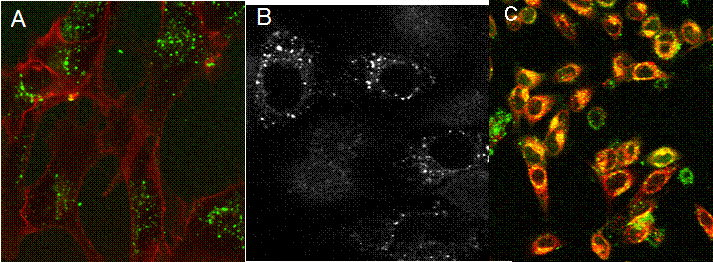In Vitro Interactions of AFGP and C-Linked AFGP Analogues
C-Linked AFGP analogues possessing enhanced stability and custom-tailored antifreeze activity have tremendous medical, commercial and industrial applications. While all of these are potentially very interesting, our laboratory has focused primarily on medical applications. Surprisingly, very little is known about the in vitro interactions of native AFGP. Towards this end, we have been actively studying the in vitro interactions of AFGP and our C-linked analogues in many different human cell lines (kidney, liver, etc.). This work involves a great deal of cellular biology, fluorescent microscopy and confocal microscopy. The ultimate goal of these studies is to understand how native AFGP and our C-linked analogues are internalized within the cell, moved around inside the cell (i.e. intracellular trafficking and localization) and finally, assess whether any undesirable side effects (toxicity etc.) occur.
Figure 1. In Vitro studies of AFGP and C-linked AFGP analogue.

|
Internalization of C-linked AFGP in fish cells
|
Internalization of C-linked AFGP in human cells
|
Colocalization of AFGP in lysosomes
|


